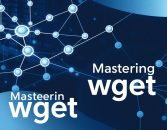
Understanding the Digital Explorers Reshaping Information Access
Imagine a tireless digital explorer, silently navigating the intricate web of interconnected digital spaces, mapping out the vast territories of online information. This explorer isn‘t human, but a sophisticated technological marvel known as a web crawler. These automated systems represent the backbone of how we discover, organize, and understand the immense digital universe surrounding us.
Web crawlers, often called spiders or bots, are not merely technical tools—they are the cartographers of our digital world. Just as ancient mapmakers ventured into uncharted territories, documenting landscapes and creating comprehensive geographical representations, web crawlers systematically traverse the internet‘s complex network, indexing and categorizing information with remarkable precision.
The Evolutionary Journey of Web Crawling Technology
The story of web crawlers is deeply intertwined with the internet‘s own remarkable evolution. In the early 1990s, as the World Wide Web transitioned from an academic experiment to a global communication platform, the need for systematic information discovery became paramount.
Matthew Gray‘s "World Wide Web Wanderer" in 1993 marked a pivotal moment in this technological narrative. This pioneering crawler represented humanity‘s first structured attempt to understand and map the digital landscape. Unlike manual human exploration, this automated system could navigate thousands of web pages simultaneously, laying the groundwork for modern search technologies.
Technological Milestones in Web Crawling
The progression of web crawling technology mirrors the internet‘s exponential growth. Early crawlers were relatively simplistic, primarily focused on basic link extraction and rudimentary indexing. However, as computational power increased and algorithmic sophistication evolved, web crawlers transformed into highly intelligent systems capable of nuanced data collection and interpretation.
Google‘s PageRank algorithm, introduced in the late 1990s, represented a quantum leap in crawling technology. By assessing not just the presence of links but their contextual significance, this approach revolutionized how digital information could be understood and ranked.
Technical Architecture: The Inner Workings of Web Crawlers
To truly appreciate web crawlers, one must understand their intricate architectural design. These are not random wandering programs but meticulously engineered systems with complex operational frameworks.
A modern web crawler comprises several interconnected modules, each serving a specialized function. The URL frontier acts as a dynamic queue, managing potential web addresses to explore. The HTML fetcher retrieves page content, while sophisticated parsers extract meaningful links and information. An advanced indexing system then processes and stores this extracted data, creating a comprehensive digital map.
Algorithmic Intelligence and Decision Making
What separates advanced web crawlers from simple scraping tools is their algorithmic intelligence. These systems make real-time decisions about which pages to explore, how deeply to traverse a website, and how to handle various technical challenges like JavaScript-rendered content or dynamically generated web pages.
Machine learning techniques now enable crawlers to adapt their strategies dynamically. They can prioritize pages based on perceived relevance, update frequency, and potential information density. This isn‘t just data collection—it‘s intelligent exploration.
Global Implications and Technological Ecosystems
Web crawlers are not merely technical tools but geopolitical instruments that shape information accessibility. Different regions and technological ecosystems have developed unique crawling approaches reflecting their specific digital infrastructures.
In the United States, crawlers like Googlebot represent a commercial approach focused on comprehensive indexing. Chinese crawlers like Baiduspider operate within a more regulated environment, reflecting the country‘s distinct internet governance model. Russian crawlers such as Yandex‘s bot demonstrate sophisticated linguistic processing capabilities tailored to Cyrillic language complexities.
Ethical Dimensions and Technological Responsibility
As web crawlers become increasingly powerful, ethical considerations become paramount. Responsible crawling isn‘t just a technical challenge but a moral imperative. Developers must implement mechanisms respecting website owners‘ preferences, adhering to robots.txt directives, and maintaining reasonable crawl rates.
Privacy protection represents another critical dimension. Advanced crawlers must balance comprehensive information gathering with individual data protection principles. This requires sophisticated filtering mechanisms and strict adherence to emerging global data protection regulations.
Economic and Innovation Potential
Web crawlers are not just technological curiosities but significant economic engines. They power search engines, enable market research, support academic studies, and drive artificial intelligence training. The global web crawling market is projected to reach [USD 2.5 Billion] by 2028, highlighting their substantial economic significance.
Emerging Technological Frontiers
The future of web crawling lies at the intersection of multiple technological domains. Artificial intelligence, quantum computing, and advanced machine learning are transforming these digital explorers from passive data collectors into intelligent, context-aware systems.
Imagine crawlers that don‘t just collect data but understand its semantic meaning, recognize complex patterns, and provide nuanced insights. This isn‘t science fiction—it‘s the technological horizon we‘re rapidly approaching.
Practical Considerations for Developers and Researchers
For those looking to implement or understand web crawlers, several key considerations emerge. Robust infrastructure, sophisticated algorithmic design, and a deep understanding of networking protocols are essential. Open-source frameworks like Scrapy and Apache Nutch provide excellent starting points for aspiring crawler developers.
Conclusion: Digital Cartography in the 21st Century
Web crawlers represent more than technological tools—they are the cartographers of our digital age. They transform the internet from a chaotic information space into an organized, discoverable ecosystem. As our digital world continues expanding, these silent explorers will remain crucial in helping us navigate, understand, and make sense of our increasingly complex information landscape.
The journey of web crawlers is far from complete. Each technological advancement opens new frontiers of exploration, promising even more sophisticated methods of understanding our interconnected digital universe.






